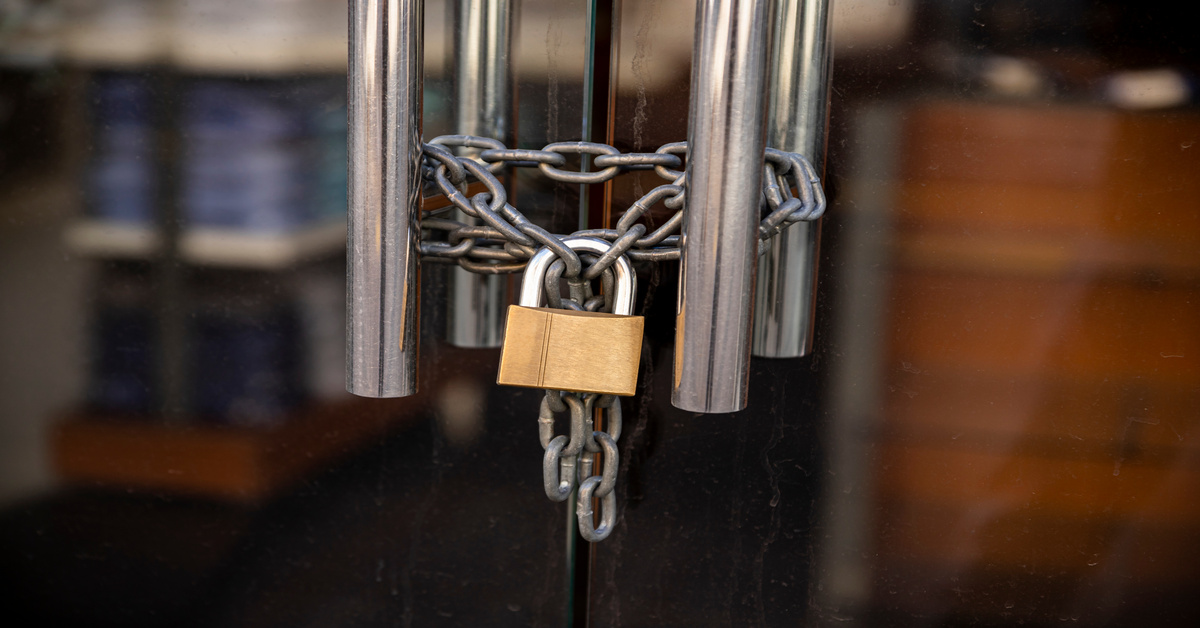The Pros and Cons of Keyed-Alike Padlocks

Security professionals and facility managers face constant decisions about lock systems that protect valuable equipment and restricted areas. The pros and cons of keyed-alike padlocks are important considerations for anyone responsible for maintaining secure premises while managing multiple access points.
Keyed-alike padlocks use identical key patterns, allowing one key to open multiple locks throughout a facility. This system offers distinct advantages for organizations that need streamlined access control, but it also introduces specific vulnerabilities that require careful evaluation.
Understanding both sides of this locking solution helps businesses determine whether keyed alike systems align with their security requirements and operational needs. At H To O Supply, we distribute quality padlock brands that offer a range of keying options to suit different security scenarios. The right choice depends on your specific application, the number of access points you manage, and your tolerance for potential security trade-offs.
Understanding Keyed Alike Padlock Systems
Keyed alike padlocks share identical internal pin configurations, which means manufacturers cut every key in the set to match the same pattern. This design allows authorized personnel to carry a single key rather than manage multiple keys for different locations.
Facilities commonly implement these systems across storage areas, equipment cages, utility panels, and perimeter gates. The manufacturing process ensures consistency across all locks in a keyed alike series, maintaining uniform quality standards while replicating the precise pin arrangements.
Organizations can order keyed-alike padlocks in various quantities, from small sets of three or four locks to extensive systems covering dozens of access points. Commercial locks often feature keyed-alike options alongside other keying configurations to provide flexibility for different security zones.
The system works particularly well when multiple people need access to the same secured areas, eliminating the complexity of key distribution and reducing the administrative burden of tracking different keys.
Key Advantages of Keyed-Alike Systems

The convenience factor is the primary benefit that drives many organizations toward keyed-alike padlock systems. Employees carry fewer keys, which cuts down on clutter and eliminates the annoying search through a crowded key ring for the right one.
This efficiency translates to time savings throughout the workday, especially for personnel who regularly access multiple secured locations. Maintenance teams, security officers, and supervisors particularly appreciate the simplified access when their duties require frequent entry to various areas. The cost considerations also favor keyed-alike systems in many scenarios:
- Lower initial investment compared to master key systems or electronic access controls
- Reduced replacement costs when employees lose keys
- Simplified inventory management for spare keys and locks
- Decreased training time for new employees learning access procedures
- Minimal administrative overhead for key tracking and distribution
Organizations also experience fewer lockouts and delays when workers can access multiple areas without having to sort through various keys. Standardization reduces operational friction and keeps workflows moving smoothly across facilities.
Potential Drawbacks and Security Concerns
Security vulnerabilities are the most significant concern with keyed-alike padlock systems. A single lost or stolen key compromises every lock in the system, potentially exposing all secured areas simultaneously. This reality poses substantial risks to facilities protecting valuable equipment, hazardous materials, or sensitive operations.
The recovery process after a security breach requires replacing every lock and redistributing new keys to all authorized personnel, resulting in considerable expense and disruption. Unauthorized key duplication also poses threats, as anyone with temporary access to a key can create copies without detection. Hardware stores and key-cutting services readily duplicate most standard padlock keys, making it difficult to maintain strict control over key distribution.
The lack of access differentiation creates additional challenges for organizations with varying security clearance levels. Keyed alike systems grant identical access to everyone who possesses a key, preventing granular control over who enters specific high-security zones.
This limitation poses a challenge when facilities must restrict certain areas to specialized personnel while maintaining general access to shared spaces. The lack of access logs further complicates security management and incident investigation.
Ideal Applications for Keyed Alike Padlocks
Specific environments and use cases benefit substantially from keyed-alike padlock configurations, despite the security trade-offs. Small businesses with limited staff members often find these systems perfectly adequate for their needs, especially when trust levels remain high among a tight-knit team.
Storage facilities with multiple units under a single ownership work well with keyed-alike systems, allowing property owners to access their various spaces efficiently. Temporary job sites and construction projects often use keyed-alike padlocks to secure tools, materials, and equipment across multiple containers and storage areas. The short-term nature of these applications reduces long-term security risks while maximizing operational convenience.
Residential applications also suit keyed alike configurations well, particularly for homeowners securing sheds, garages, gates, and storage units on their property. The convenience of using a single key for all personal property outweighs security concerns in most residential contexts.
Schools and recreational facilities sometimes implement keyed alike systems for equipment cages, lockers, and storage rooms that contain low-value items. The priority in these settings is keeping unauthorized individuals out rather than preventing access for trusted staff members who legitimately need entry.
Making the Right Choice for Your Facility

Evaluating your specific security requirements helps determine whether keyed-alike padlocks meet your operational needs. Consider the value of the assets behind each lock, the number of people who need access, and the potential consequences of a security breach.
Facilities that protect high-value equipment, hazardous materials, or confidential information should explore alternatives such as master key systems or electronic access controls that offer stronger security and better access tracking. Organizations with high employee turnover rates face increased risks with keyed alike systems due to the constant circulation of keys among changing personnel.
Making the Right Call for Your Facility
The pros and cons of keyed-alike padlocks balance convenience against security requirements, and the answer you choose may vary by application. Budget constraints may influence your decision, but remember that inadequate security can cost far more than the initial investment in better systems.
H To O Supply offers commercial locks to match your security needs and operational preferences. We’ll help you find the appropriate locking solutions that protect your assets and maintain efficient access for authorized personnel. Careful planning and honest risk assessments will lead to security decisions that serve your facility well for years to come.

Recent Comments